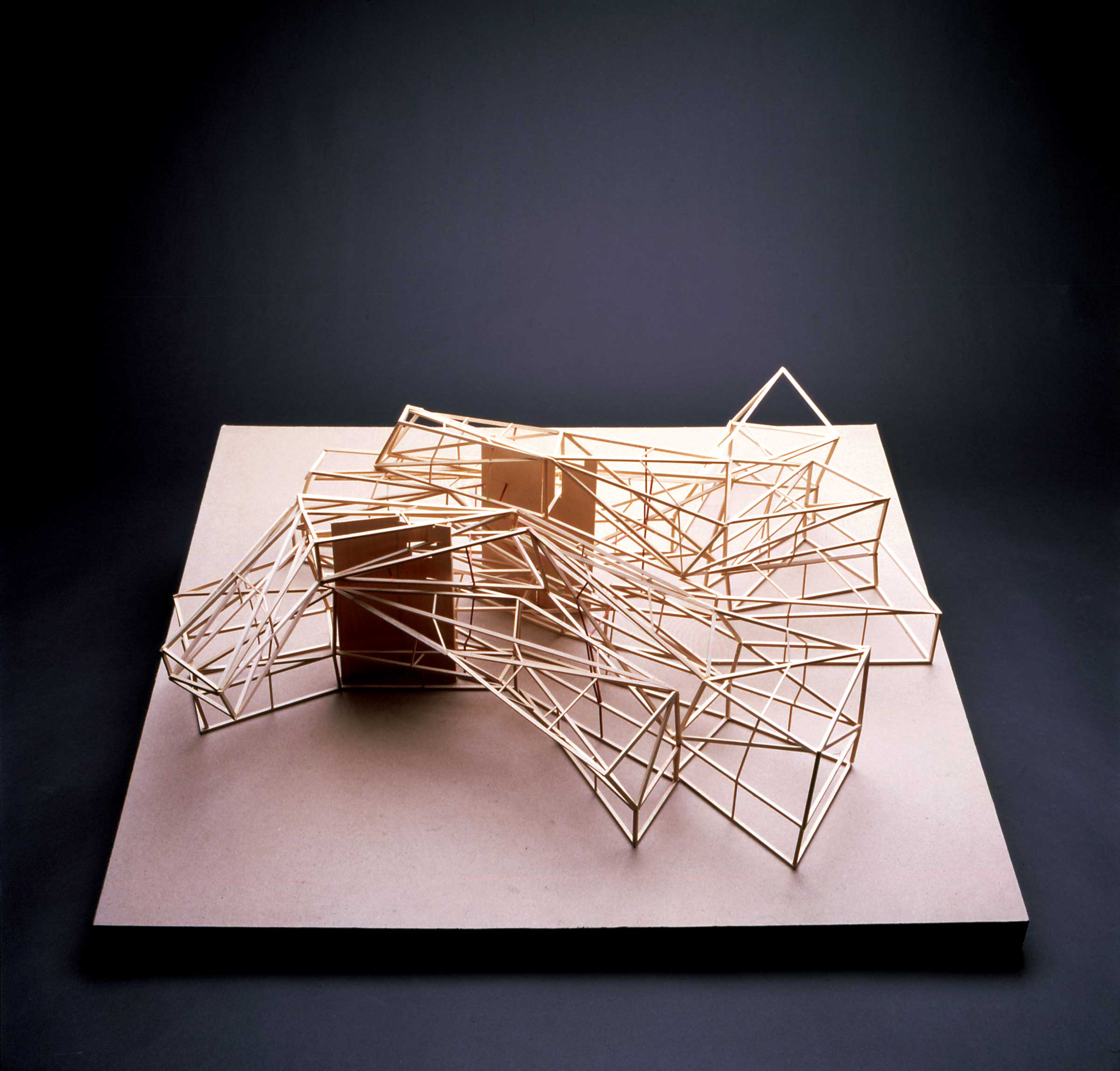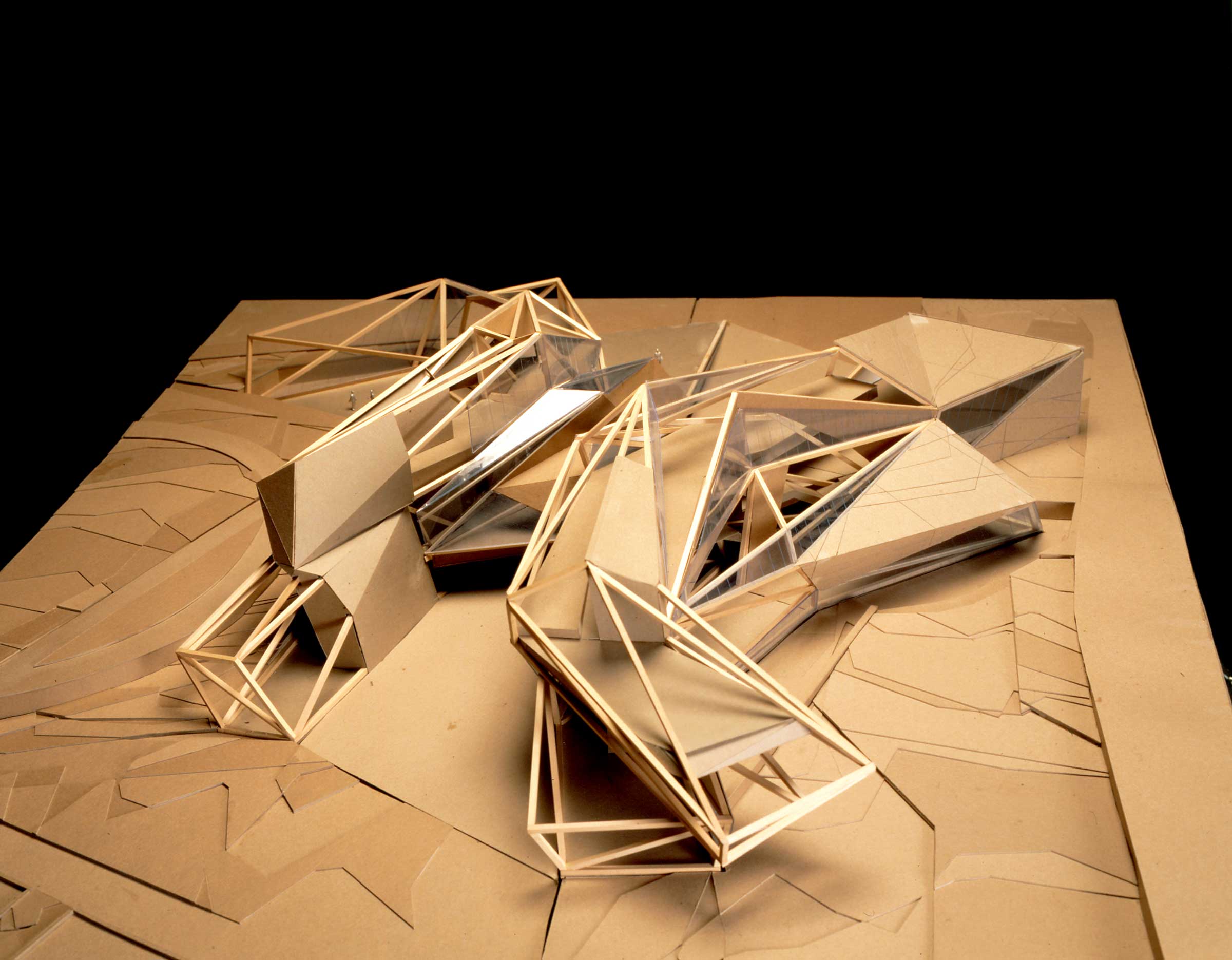
BIBLIOTHÈQUE DE L’IHUEL
Location: Geneva, Switzerland
Year: 1996-1997
The
late-twentieth century has witnessed the growing awareness of virtual space,
space that has always been repressed in actual space by the constraints of
form-making. The tradition of architecture has been based on the making of form
for the past 400 years. This priority gave a value to forming, while space was
seen as a residue. In our library, space is the initiating condition, which
produces a series of spaces that can be called interstitial, space that is
neither the product of a framing ground nor formed from the generation of a
preexistent figure. The interstitial is an intermediate condition between
figure and ground, between form and space. It is the result of a process of
spacing, which involves the transformation and recording of vectors, energy
flows that have a mass and a density.
Given the idea of memory that permeates both a library and the idea of space, we began with a diagram of neurological activity, transforming it to become a trace rather than a representation in the final organization of space. We brought this diagram to the site, which is located at an intersection of two types of urbanism: one in which a landscape or parks defines the spaces, another in which the spaces are defined by objects. The object operates between the landscape and the object, blurring both conditions in one heterogeneous space. The library is a series of functional prisms capable of simultaneously performing multiple tasks, producing a relay of knowledge that can express the acquisitions of the past in a new representation of knowledge with inferences from artificial intelligence. The diagrammatic structure from which we began produced an architecture that does not embody memory as form but rather develops a form that is a trace of its process.
Given the idea of memory that permeates both a library and the idea of space, we began with a diagram of neurological activity, transforming it to become a trace rather than a representation in the final organization of space. We brought this diagram to the site, which is located at an intersection of two types of urbanism: one in which a landscape or parks defines the spaces, another in which the spaces are defined by objects. The object operates between the landscape and the object, blurring both conditions in one heterogeneous space. The library is a series of functional prisms capable of simultaneously performing multiple tasks, producing a relay of knowledge that can express the acquisitions of the past in a new representation of knowledge with inferences from artificial intelligence. The diagrammatic structure from which we began produced an architecture that does not embody memory as form but rather develops a form that is a trace of its process.
Concept


Drawings

Model photos



